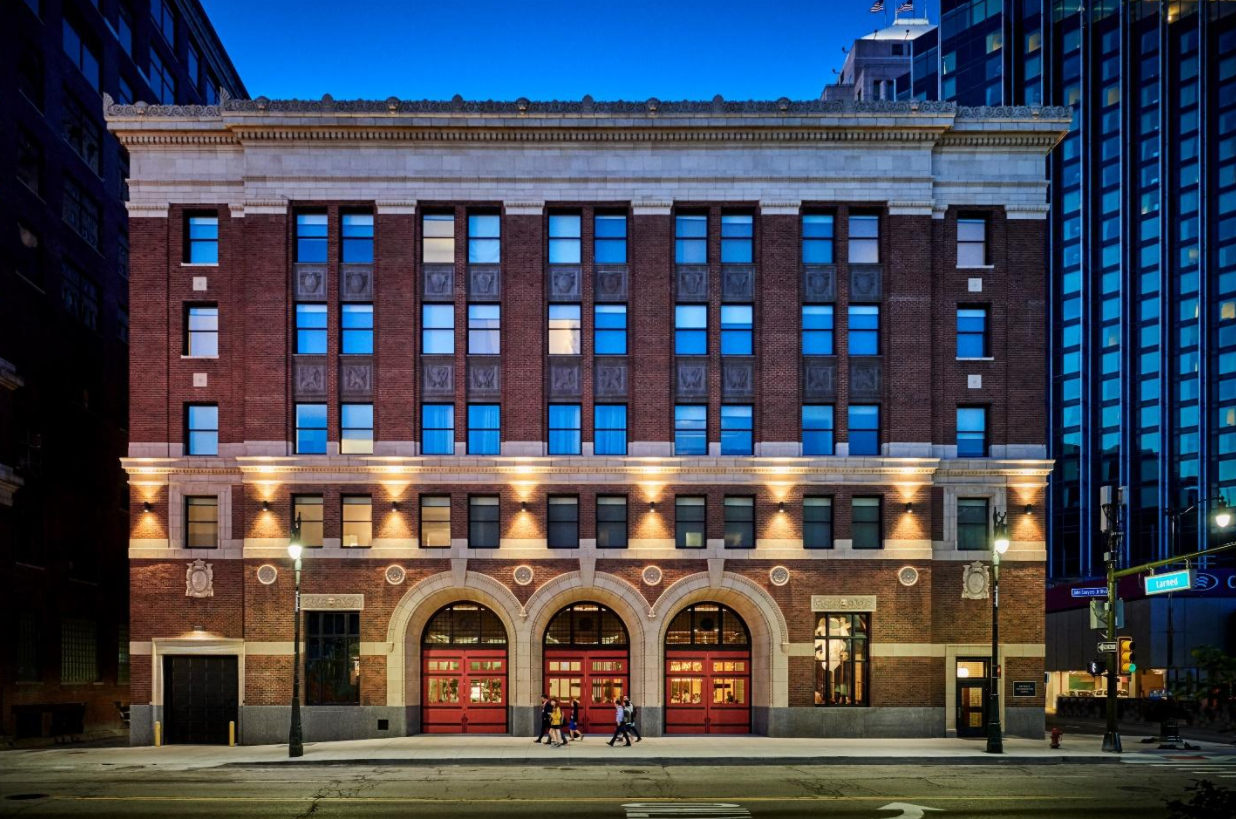Detroit’s Resurgence
Move over, Motor City and Motown as handles for Detroit, and make way for Momentum City.
Ever since Detroit emerged from bankruptcy in December of 2014, the city of approximately 680,000 (4.3 million metro-wide) has been moving in one direction: forward. And the momentum has reached a sustainable level that is evident by investment activity and redevelopment.
“Each time a new listing hits the market, the potential buyer pool widens, including international interest,” says NAI Global’s Andrew Farbman, Chief Executive Officer of NAI Farbman, with offices in Southfield, MI and Downtown Detroit. “We haven’t seen activity like this in my lifetime,” he adds.
It wasn’t that long ago – summer of 2013, that Detroit became the largest U.S. city to file for bankruptcy with $18.5 billion in debt and the inability to repay thousands of creditors.
Detroit’s bankruptcy exit plan was approved in November 2014 and became official the following month, allowing the city to shed $7 billion in municipal debt and invest $1.7 billion to improve city services. Some of that money was deployed to replace aging and non-working city street lights and by December of 2016, outdated high-pressure sodium lights were replaced with 65,000 LED lights, making Detroit the largest U.S. city with LED street lighting.
While much has been reported on Dan Gilbert’s Bedrock Real Estate Services LLC and its committed investment into Downtown Detroit (now over 100 properties and approaching $3.5 billion), Bedrock isn’t the only player in town, or nearby Ann Arbor for that matter, where developer First Martin Corporation recently completed a 140,000-square-foot regional headquarters facility for Google.
“The brain drain from the region that was prevalent for so long is essentially coming to a stop. Many of the millennials and recent grads from Ann Arbor are staying here, because there are jobs – good jobs, particularly related to the region’s history as an engineering center,” Farbman says.
When Johnson Controls decided to spin off its new seating and interiors (automotive) business and call the new firm Adient, it picked Detroit for its headquarters. Adient selected the Marquette Building in downtown (at 243 W. Congress) and is renovating the 164,000-square-foot building with plans to bring 500 workers to the city. Adient intends to invest upward of $100 million for labs and related tenant improvements, in addition to its $97.8 million investment to purchase the 10-story building as well as a nearby parking garage and renovate the building.
Even corporate relocations are ending on a positive note, according to Farbman.
When Google left its downtown Ann Arbor location at McKinley Towne Center on E. Liberty St., the software company LLamasoft, which had recently won a $50 million round of funding, quickly backfilled the space, he said.
Similarly, when automotive global supplier Visteon Corporation vacated space at the Grace Lake Corporate Center off of Highway 275 in Southeastern Michigan’s Van Buren Township, most of that space was rapidly absorbed by GE and Citibank.
Big infrastructure projects are helping fuel Detroit’s resurgence.
Little Caesars Arena is set to open this fall and host the Detroit Red Wings and Pistons’ seasons for the first time. The arena broke ground in September 2014 and is about to become a reality. It will include connected residential and retail facilities, plus a new hotel. Farbman expects that much of the surrounding real estate will be redeveloped over time, as it has in other urban markets with new arenas.
Speaking of hotels, Chicago-based hotel developer and operator Aparium worked with developer Walter Cohen to transform the historic Detroit Fire Department Headquarters into a 100-room, upscale hotel called Foundation at the corner of Washington Blvd. and W. Larned St. It’s the first hotel of its kind in Detroit and an important piece of the renaissance puzzle here.
The historic Detroit Fire Department Headquarters was converted to the luxury class, Foundation Hotel.
Another significant and recent milestone was the May 2017 opening of the QLine, a 3.3-mile circulating streetcar along Woodward Avenue between Congress Street and West Grand Blvd. in Detroit. The significance of the public transit system is that it cuts through Midtown where Wayne State is located (always an anchor of the city) and can easily bring people to the district called New Center.
“Detroit has always had a very deep soul and for someone like myself that spent most of my life and career there, its comeback is really great to see. City management has done a good job of taking care of its assets, such as the waterfront and pre-war buildings. Combined with responsible governing at the state level and the infusion of hundreds of millions of dollars in private capital investment, there’s no telling how far Detroit’s resurgence can go,” said Farbman.
